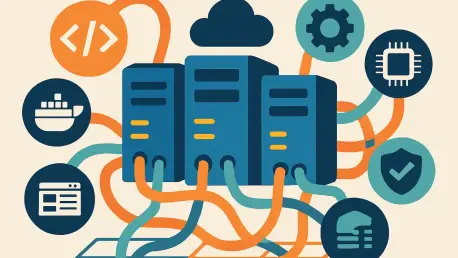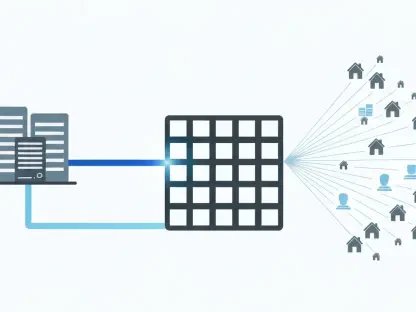In an era where technology evolves at breakneck speed, organizations face a daunting challenge: ensuring their data strategies remain robust amidst the turbulence of vendor consolidation, product discontinuations, and unexpected acquisitions. The reality of shrinking vendor options or escalating costs can disrupt even the most carefully planned tech ecosystems, leaving businesses scrambling to maintain control over their critical data assets. This pressing issue demands a proactive approach to building a tech stack that not only withstands such disruptions but also positions companies to thrive under uncertainty. By focusing on flexibility and strategic foresight, businesses can navigate the complexities of a shifting vendor landscape without sacrificing efficiency or trust in their data systems. The path forward involves understanding the risks of dependency and crafting solutions that prioritize adaptability over rigid commitments to a single provider.
Navigating the Risks of Vendor Dependency
The increasing trend of vendor consolidation in the technology sector poses significant risks for organizations heavily reliant on a single provider for their data platforms. When vendors merge or discontinue support for certain products, businesses can find themselves trapped in outdated systems or forced into costly migrations with little notice. This dependency often leads to vendor lock-in, where switching to alternative solutions becomes prohibitively expensive or technically challenging. The impact extends beyond mere inconvenience, affecting data quality, operational efficiency, and even competitive positioning. Companies must recognize that such disruptions are not isolated incidents but part of a broader pattern in the industry, where larger players absorb smaller ones, leaving customers with fewer choices. Addressing this vulnerability requires a shift in mindset, moving away from passive acceptance of vendor decisions toward a deliberate strategy that safeguards autonomy and ensures long-term stability in data management practices.
Beyond identifying the risks, a deeper understanding of how vendor dependency affects scalability and innovation is essential for organizations aiming to future-proof their tech stacks. A sudden change in vendor support or pricing models can stall critical projects, delay cloud adoption, or create friction in user experiences, ultimately undermining business goals. The financial burden of adapting to these changes often diverts resources from strategic initiatives to mere survival tactics. Moreover, reliance on a single platform can stifle the ability to integrate emerging tools that might better address specific needs like governance or automation. To counter this, businesses should evaluate their current platforms with a critical eye, identifying pain points such as unpredictable costs or lack of interoperability. By taking stock of these challenges, decision-makers can lay the groundwork for a tech stack that not only mitigates the fallout from vendor shifts but also supports dynamic growth in an ever-changing digital landscape.
Enhancing Existing Systems with a Surround and Extend Approach
One viable strategy for mitigating the impact of vendor consolidation is the “Surround and Extend” approach, which focuses on enhancing existing data platforms rather than replacing them outright. This method involves integrating modular, interoperable tools to address specific shortcomings, such as gaps in data quality or inefficiencies in automation processes. By layering complementary solutions onto core systems, organizations can preserve their initial investments while gradually modernizing critical components. This approach minimizes disruption, as it avoids the need for a full system overhaul, and allows for targeted improvements that enhance user experiences and operational outcomes. It proves particularly effective for businesses already committed to a platform but seeking greater flexibility or a smoother transition to cloud environments, ensuring that existing infrastructure remains relevant without succumbing to the risks of obsolescence.
Taking this strategy further, the “Surround and Extend” approach also fosters vendor independence by reducing reliance on a single provider for all data needs. Organizations can select best-of-breed tools that integrate seamlessly with their current systems, creating a more resilient tech stack capable of adapting to future changes. This method not only boosts return on investment by extending the life of legacy platforms but also accelerates the adoption of innovative solutions without the burden of starting from scratch. For companies hesitant to undertake massive migrations, this incremental path offers a low-risk way to address immediate pain points while building toward a more agile future. The key lies in identifying tools that align with long-term data goals, ensuring that each addition strengthens the ecosystem rather than complicating it. Through careful planning, businesses can transform potential vulnerabilities into opportunities for sustained growth and adaptability.
Breaking Free with a Platform Displacement Strategy
For organizations facing significant uncertainty with their current data platforms, a bolder approach known as “Displace the Platform” may be the most effective solution to escape the pitfalls of vendor consolidation. This strategy entails a complete replacement of legacy or underperforming systems, particularly when support is waning, costs are unpredictable, or the technology no longer aligns with business objectives. By transitioning to modern, scalable alternatives, companies can break free from vendor lock-in and embrace cloud-first or multi-cloud strategies that prioritize agility and transparency in pricing. This path is often ideal for businesses dealing with end-of-support on-premises solutions or frustrated by prolonged implementation cycles, as it offers a direct route to simplifying operations and accelerating time-to-value in a competitive market.
Delving deeper into this approach, platform displacement empowers organizations to standardize their data management practices and eliminate the inefficiencies tied to outdated systems. The shift to newer platforms often brings enhanced capabilities, such as improved governance and streamlined licensing models, which can significantly reduce operational friction. While this strategy requires a greater upfront investment compared to incremental enhancements, the long-term benefits include better cost control and the ability to scale confidently in response to evolving needs. It also positions companies to leverage cutting-edge innovations without being tethered to legacy constraints. Success in this endeavor hinges on thorough planning and a clear understanding of organizational priorities, ensuring that the chosen solution not only resolves current issues but also supports future ambitions. This decisive move can redefine how businesses manage data, turning a potential crisis into a catalyst for transformation.
Crafting a Tailored Path to Data Resilience
Reflecting on the challenges posed by vendor consolidation, it becomes evident that organizations must adopt strategic measures to protect their data ecosystems from unforeseen disruptions. The dual approaches of surrounding and extending existing platforms or displacing them entirely offer practical frameworks for maintaining control and flexibility. Each path, whether through incremental modernization or comprehensive replacement, is tailored to address specific organizational needs, from minimizing risk to achieving cost efficiency. The emphasis on adaptability and trusted data delivery underpins every decision, guiding businesses through a landscape marked by uncertainty. Looking back, the focus is on empowering decision-makers to evaluate their tech stacks critically, ensuring that every choice aligns with long-term goals.
Moving forward, the journey toward data resilience requires a commitment to proactive evaluation and strategic action. Organizations should begin by assessing their current platforms for scalability and friction points, determining whether enhancement or replacement offers the fastest route to reliable data outcomes. Engaging in conversations with stakeholders to map out priorities can clarify the best direction, whether it involves integrating modular tools or embarking on a full migration. Exploring partnerships with vendors that prioritize transparency and interoperability will further strengthen the tech stack against future disruptions. By taking these deliberate steps, businesses can transform their data strategies into enduring assets, ready to navigate whatever shifts the technology landscape may bring.









